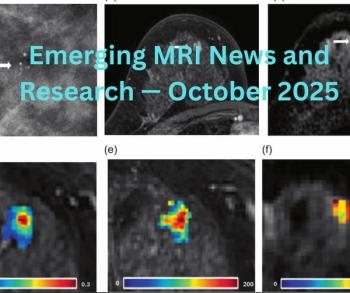
Sixty-four-slice CTA outperforms DSA for brain aneurysm detection
Thanks to a near-perfect performance in a large cohort study in China, 64-slice CT angiography has shown it could replace digital subtraction angiography as the modality of choice for detecting suspected brain aneurysms at risk of spontaneous subarachnoid hemorrhage.
Thanks to a near-perfect performance in a large cohort study in China, 64-slice CT angiography has shown it could replace digital subtraction angiography as the modality of choice for detecting suspected brain aneurysms at risk of spontaneous subarachnoid hemorrhage.
Dr. Qi Li and an investigative team at Chongqing Medical University enrolled 108 consecutive patients with suspected intracranial aneurysms who underwent 64-slice CTA and DSA between May 2006 and June 2007. The investigators used combined DSA and surgical findings as the reference standard to compare CTA results.
Both modalities detected the same number of aneurysms. But CTA enabled radiologists to make more reassuring diagnoses with 3D techniques, such as volume rendering and maximum intensity projections, which helped skirt overlapping anatomic structures and artifacts and provide accurate lesion characterizations. The investigators published their findings in the September issue of Radiology.
Researchers found 107 aneurysms in 96 patients, 106 of which were detected by 64-slice CTA and DSA. CTA recorded sensitivity and specificity values of 99% and 100%, respectively. Positive and negative predictive values for CTA were 100% and 92.3% respectively.
Despite limitations-3D rotational angiography was not available for comparison-study findings suggest that 64-slice CTA can detect ruptured aneurysms promptly and accurately and help physicians make therapeutic decisions in patients with subarachnoid hemorrhage, researchers noted.
"In most cases, 64-section CT angiography could replace digital subtraction angiography as the primary method for the detection of suspected aneurysms in the setting of spontaneous subarachnoid hemorrhage," the researchers wrote.
DSA remains the standard of care for detection and characterization of intracranial aneurysms, despite shortcomings. It presents only biplanar reconstructions of brain vessels, can be time-consuming, and exposes patients to high doses of radiation. It has also been associated with a risk of neurologic complications.
In addition to its faster speed, 64-slice CTA uses lower radiation doses, is capable of 3D reconstruction of isotropic data sets for rich anatomic detail, and offers unlimited postprocessing techniques that may improve diagnostic accuracy, all of which give it a competitive edge, according to Li.
CTA with four- to 16-slice scanners has been compared favorably with DSA in previous studies of this setting. However, its sensitivity for detection of aneurysms smaller than 3 mm always came up short. Recent studies have shown that 64-slice CTA can offer improved performance on small lesions and can help detect aneurysms even smaller than 3 mm, the researchers noted.
According to the clinical literature, approximately one of every 20 or so adults in the U.S. may develop an intracranial aneurysm and thus be at risk for subarachnoid hemorrhage. About 80% of cases of the stroke-like condition, which can lead to serious disability or death, are caused by ruptured aneurysms.
Newsletter
Stay at the forefront of radiology with the Diagnostic Imaging newsletter, delivering the latest news, clinical insights, and imaging advancements for today’s radiologists.




























